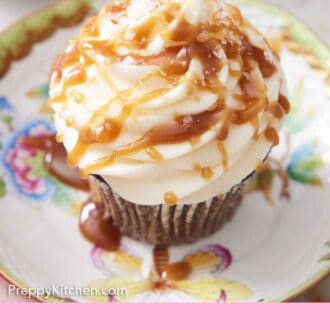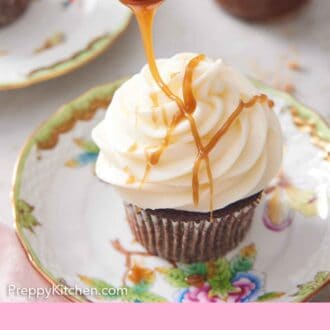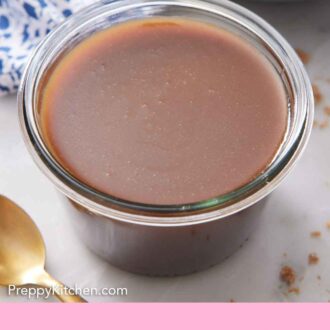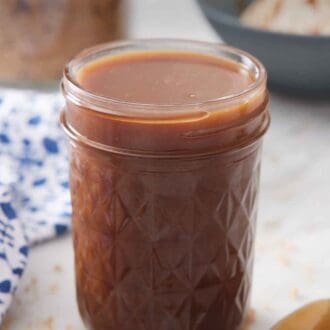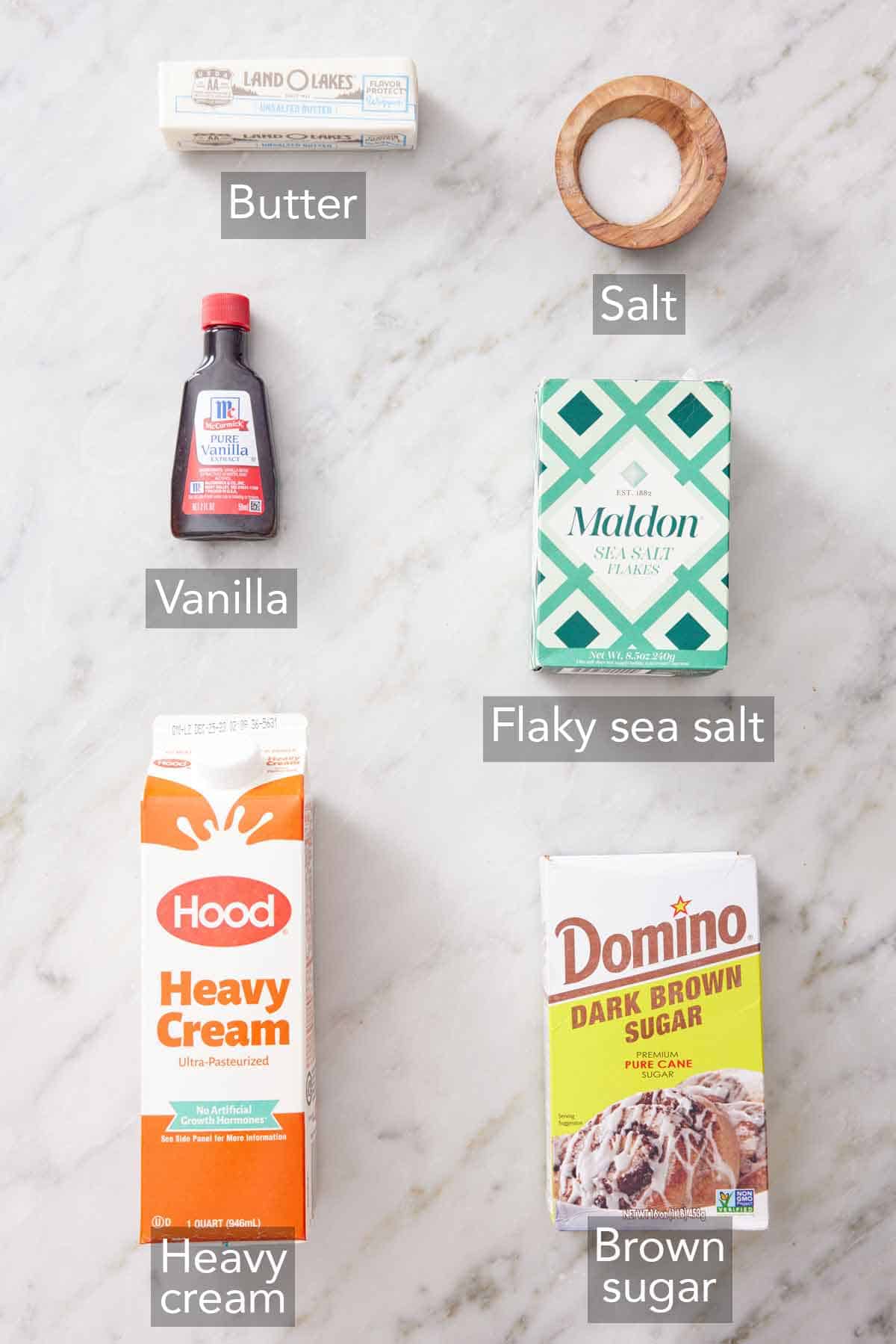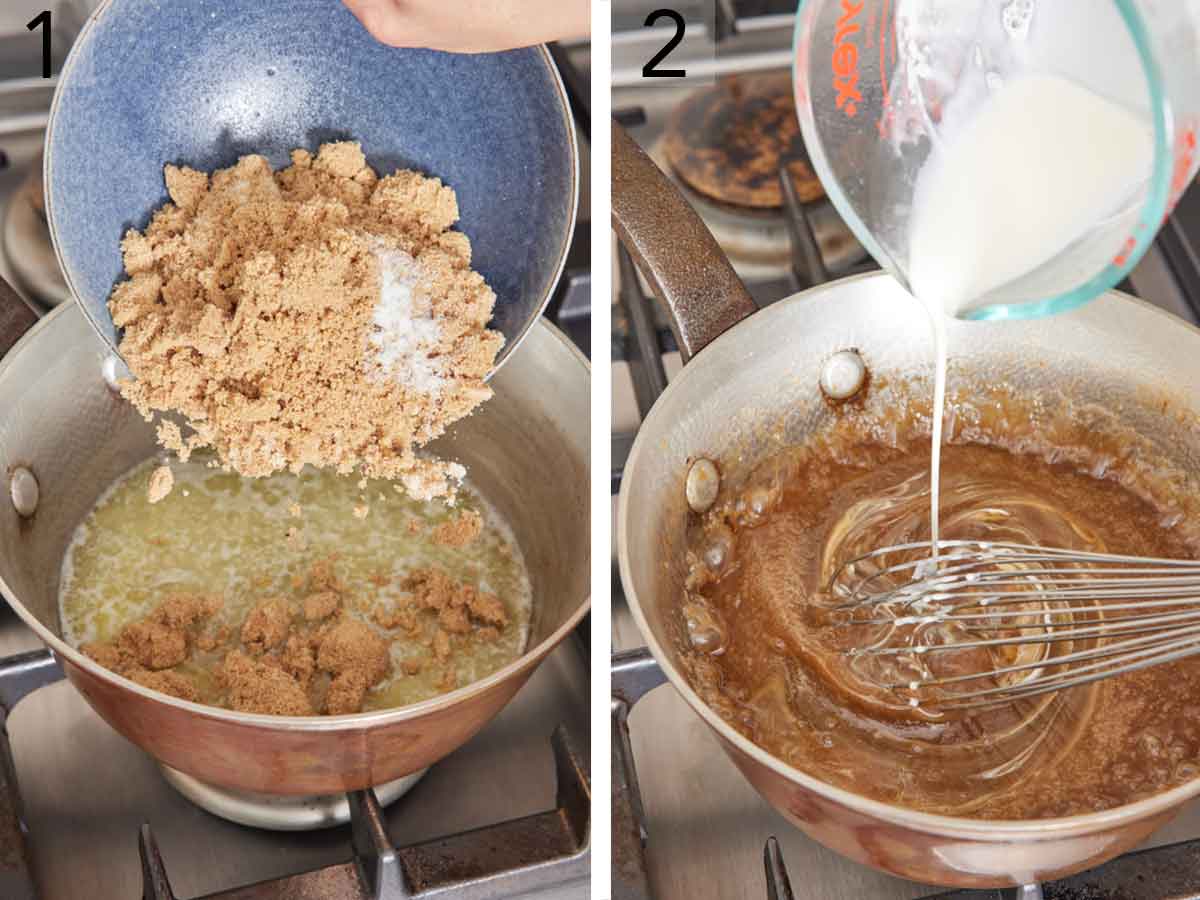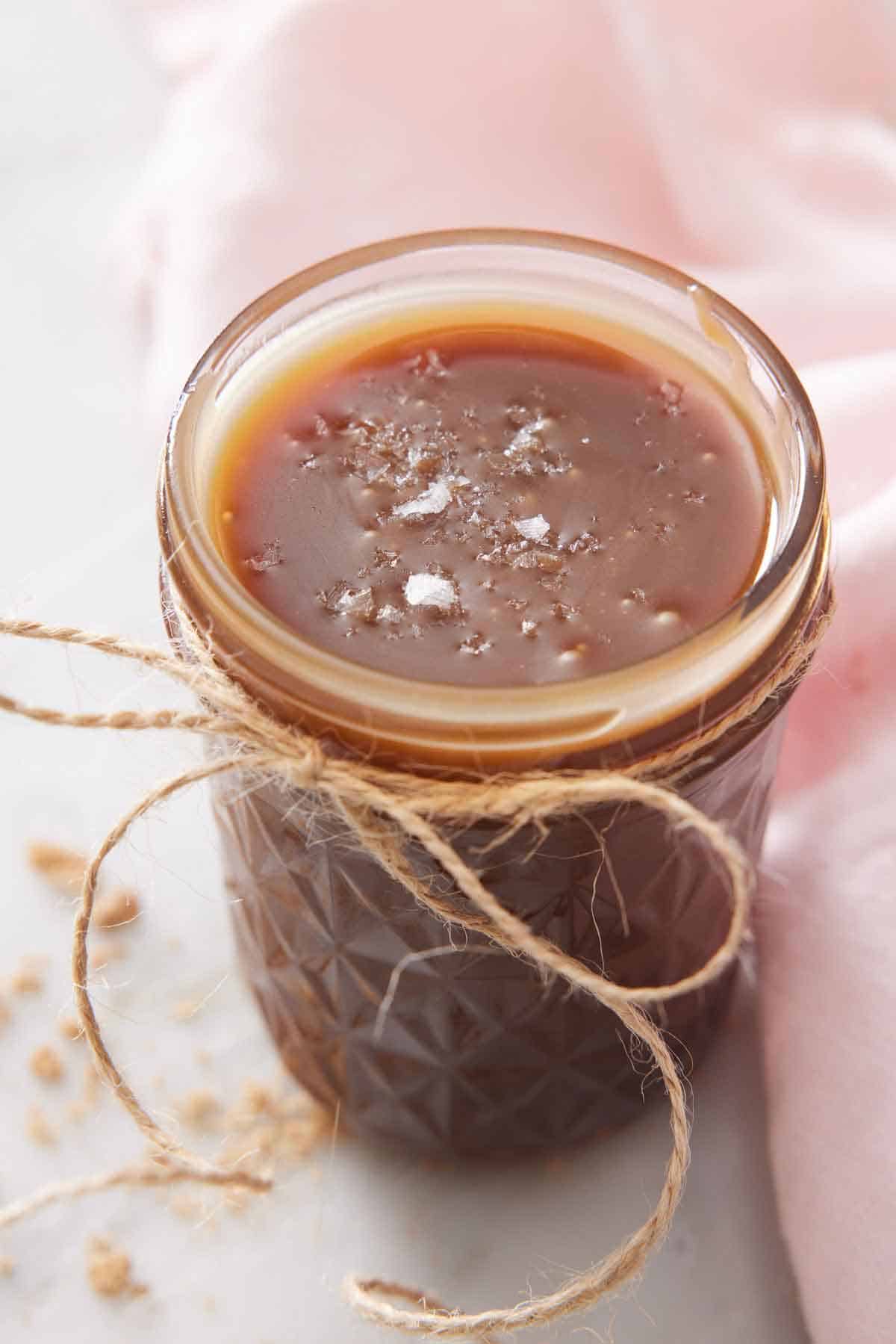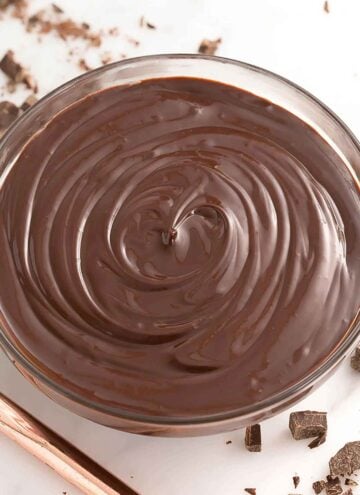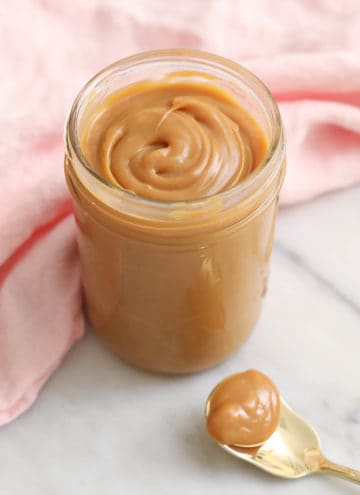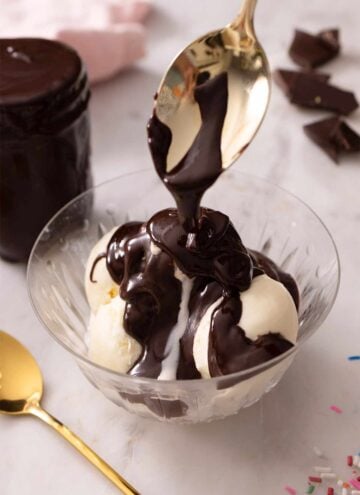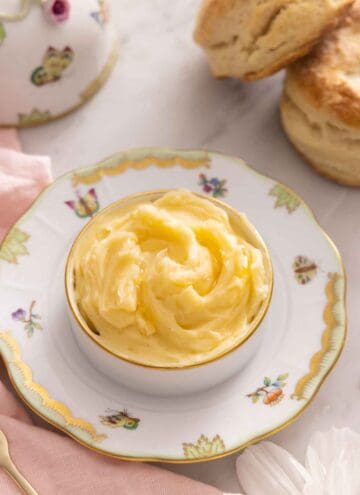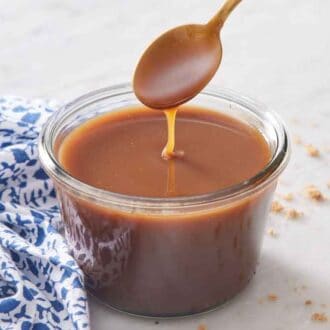Butterscotch is often confused with caramel. While they are in the same family, they do have very different flavors and are made with different ingredients. On top of that, this recipe is a bit easier to make, takes about half the time to cook, and there’s no somewhat finicky step of waiting for sugar to caramelize, resulting in a buttery, sweet, creamy sauce in about 5 minutes. For more butterscotch-flavored recipes, try my Butterscotch Pie recipe, Scotercheroos recipe, and easy Magic Cookie Bars.
What You Need to Make this Recipe
Butter — opt for unsalted butter so you can control exactly how much salt goes into the sauce. Brown sugar — light brown sugar and dark brown sugar both work. I prefer dark brown sugar for a more intense molasses flavor and darker color. Salt — kosher salt balances out and enhances the sweetness of the sauce. Heavy cream — heavy cream gives the dessert sauce its velvety consistency. Do not substitute it for half and half or whole milk. Vanilla extract — use a high-quality vanilla extract and avoid vanilla essence. Flaky sea salt (optional) — sprinkle a little flaky sea salt over the sauce before serving for an extra boost of flavor and to balance the sweetness.
How to Make Butterscotch
- In a heavy-bottomed medium saucepan with tall sides, melt the unsalted butter over medium heat. Stir in the dark brown sugar and kosher salt. Bring to a boil and stir occasionally for about 3 minutes. The mixture should start off looking grainy and then transform into a thick batter-like consistency as the sugar dissolves.
- Carefully whisk in the cream. If the sugar clumps a bit at first, just keep stirring until the mixture is smooth again. Reduce the heat to medium-low. If you have a candy thermometer, you can add it to the pot at this point.
- Boil the sauce and stir frequently until the temperature reaches 220°F for a thinner sauce or 225°F for a thicker sauce. If you don’t have a candy thermometer, this will take 1 to 3 minutes, and the sauce should fall off a spoon in a sheet.
- Remove the sauce from the heat and stir in the vanilla extract. After it has cooled for 10 minutes, transfer the sauce to an airtight container and allow it to cool completely. It will thicken as it cools.
Pro Tips for Making this Recipe
Use a heavy-bottomed pan. This will ensure heat is distributed evenly so the sauce cooks evenly. A pot with a thin bottom can burn the sugar easily, especially in the first stage of cooking. You can use light brown sugar. This will yield a lighter-flavored and lighter-colored sauce. Skip the corn syrup. Some recipes call for corn syrup, but I don’t think it is a necessary ingredient for a silky sauce. Use room temperature heavy cream. If the heavy cream is too cold, it could curdle due to the fast and extreme temperature change of pouring cold cream into very hot sugar. Warmer or room temperature cream will result in a silky smooth sauce. Don’t overcook it. You will end up with a sauce that tastes bitter and burnt. Consistency tips: A thinner sauce is perfect for using cold or drizzling over cold desserts like ice cream. Cook the sauce for a little longer to make a thicker sauce to pour onto warm or room temperature desserts like cakes or brownies.
If you’ve tried this butterscotch recipe, then don’t forget to rate the recipe and let me know how you got on in the comments below, I love hearing from you!

